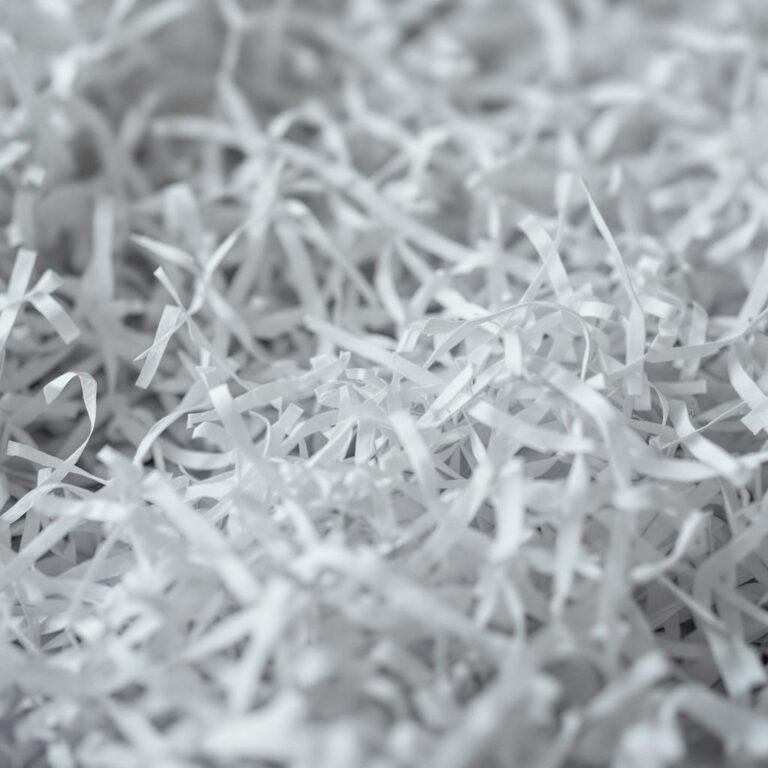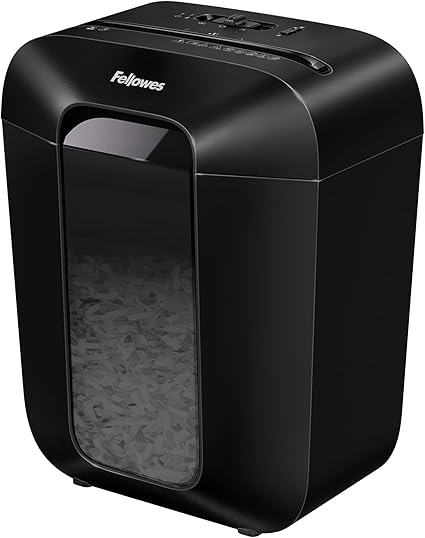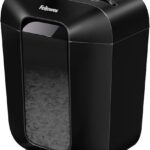Ever wrestled with a stubborn paper shredder? You’re not alone. Shredder jams are more common than you’d think, often turning a simple task into a frustrating ordeal. Whether it’s carelessly cramming too many sheets or dealing with the aftermath of a paper mishap, knowing how to quickly unjam your shredder is essential. This guide will walk you through practical steps to get your shredder back in action. Say goodbye to the headache of jams and find your way to smoother shredding experiences.
Understanding Paper Shredder Jams
If youâve ever faced the menace of a paper shredder jam, you know it can halt productivity faster than a printer running out of ink. Let’s break down why these jams happen and identify the types you might encounter.
Common Causes of Jamming
Paper shredders, while convenient, are not invincible. They have limits, and pushing those boundaries often leads to jams. Here are some of the main culprits:
- Excessive Paper: Feeding too many sheets at once is like trying to fit a square peg in a round hole. It’s a sure-fire way to clog the machine.
- Unwanted Materials: Sometimes, things other than paper mistakenly find their way into shreddersâthink credit cards or CDs. These materials can cause significant blockages and even damage the machine.
- Lack of Maintenance: Like any machine, shredders need care. Not oiling the blades regularly can lead to friction and jamming.
For more insights into preventing these common mistakes, you can check out Staples’ tips on preventing shredder jams.
Types of Jams
Not all jams are created equally. Understanding the difference can help you diagnose and tackle the problem effectively.
- Paper Jams: The most common, these occur when paper doesn’t pass through smoothly. You’ll often hear the shredder straining as it tries to process the excess material.
- Motor Jams: These are less obvious but can be detected if your shredder stops suddenly and wonât power back on. It can be caused by overheating or electrical faults.
- Blade Jams: Often due to lack of oiling or foreign objects, these jams prevent the blades from rotating. You might notice unusual noise or see the paper crumple awkwardly without shredding.
Understanding these types helps you react effectively. For more detailed troubleshooting, the Whitaker Brothers’ guide offers step-by-step solutions.
Shredder jams are a pain, but armed with this knowledge, you’re better equipped to handle them swiftly and safely. Keep an ear out for unusual sounds and always rememberânot all shreddable materials are equal.
Step-by-Step Guide to Unjamming a Shredder
Facing a jammed paper shredder can feel like a roadblock in your day. However, with a few straightforward steps, you can safely and efficiently tackle this common issue. Hereâs how to do it.
Safety First
Before anything else, unplug the shredder. It’s tempting to dive right into fixing the problem, but safety should always come first. Unplugging ensures that the blades wonât accidentally start during your repair process, protecting both your fingers and the machine.
More safety tips can be found in this comprehensive guide on Paper Shredder Safety.
Identifying the Source of the Jam
Next, you need to locate the jam. Listen closely: if there’s a consistent whirring or grinding, the blades might be struggling. Visually inspect the shredder’s mouth to see if paper is stuck. Sometimes, gently shaking the machine can temporarily jar loose the jam, making it more visible.
For a detailed step-by-step approach, consider this guide on handling shredder jams.
Removing the Jammed Paper
Now for the extraction. Use a pair of tweezers or pliers to carefully pull out the clogged paper. Be gentleâyanking too hard can tear the paper, leaving bits behind. If the shredder has a reverse button, use it to help back the paper out. This is a strategic tug-of-war, not brute force.
Cleaning the Blades
Once the jam is cleared, it’s wise to clean the blades. This step helps prevent future jams and keeps the shredder operating smoothly. Use a brush to remove paper clips or staples and apply shredder oil to lubricate the blades. This maintenance is like giving your shredder a refreshing drink after a hard day’s work.
Resetting the Shredder
Finally, reset the machine. Some shredders have a reset button; if yours does, press it to clear any error codes. Plug it back in, run a test sheet through, and ensure everything is functioning smoothly. This is like restarting your computer after a crashânecessary to clear any residual glitches.
With these steps, you’re equipped to handle most shredder jams confidently. Remember to maintain regular upkeep and perhaps introduce a bit of routine care post-clearance to keep your shredder in tip-top shape.
Preventative Measures
A paper shredder is a handy tool for maintaining privacy and keeping paper clutter under control. However, preventing issues in the first place is the best way to ensure a smooth experience. Let’s look at some essential preventative measures that can help avert those pesky jams.
Proper Usage Guidelines
Understanding your shredder’s limits can drastically reduce the chance of a jam. Here are some practical tips:
- Know the Capacity: Every shredder comes with a specified sheet capacity. Generally, this information is found in the manual or sometimes printed on the shredder itself. Exceeding this limit is the most direct route to a jam.
- Check Materials: Most standard shredders are designed for paper only. If your model handles other materials like credit cards or CDs, it should be stated in the manual. Otherwise, stick to paper to avoid damaging the blades.
For more detailed guidance, you can visit Whitaker Brothers.
Regular Maintenance Tips
Regular upkeep is crucial for the optimal performance of your shredder. Here’s what you can do:
- Lubricate the Blades: Just like you wouldn’t drive a car without oil, you shouldn’t run a shredder without proper lubrication. Shredder oil helps the blades move freely, preventing unnecessary resistance and jams.
- Routine Checks: Check for any leftover bits of paper or debris in and around the blades. Keeping the shredder clean can prevent buildup that leads to future jams.
- Empty the Bin: It’s a simple task but often overlooked. An overflowing bin can cause backloading into the blades, which may result in jams.
You can explore more maintenance tips at Quill’s Blog.
When to Seek Professional Help
Sometimes, despite your best efforts, things go awry. How do you know when it’s time to bring in the pros?
- Recurring Jams: If you’re dealing with frequent jams despite keeping up with maintenance, it may indicate a mechanical problem.
- Unusual Noises: If your shredder sounds like it’s running a marathon instead of a routine shredding task, it might need a professional check-up.
- Power Issues: Struggling with the power? If the shredder won’t start or keeps shutting down unexpectedly, it’s worth calling in an expert.
When in doubt, don’t hesitate to reach out to a professional. It could save your machine from further damage and ensure it stays in top shape.
These preventative measures are your best defense against shredder jams. Keep them handy, and enjoy a jam-free shredding experience!
Summary of How to Effectively Unjam a Shredder
Tackling a jammed shredder can seem daunting, but with the right approach, it’s manageable. Here are the key steps you should focus on:
- Safety Precautions: Before attempting any fixes, ensure your shredder is unplugged. This simple step prevents accidental activation, keeping your fingers safe.
- Locate the Jam: Carefully inspect the shredder to determine where the paper is lodged. This might require gently shaking the machine to identify trapped paper.
- Paper Extraction: Use tools like tweezers or pliers to gently remove any jammed paper. Applying the reverse function on the shredder can also help in easing out the paper.
- Blade Maintenance: Clean the blades post-clearance. Use a brush to remove debris and lubricate the blades with shredder oil to ensure smooth operation.
- Reset the Shredder: After unjamming, reset the machine to remove any lingering error codes. Run a test sheet to confirm everything is working fine.
Remember, regular maintenance, such as lubrication and cleaning, not only deals with current jams but also helps in preventing future ones. For a comprehensive guide, check this Staples guide on unjamming a shredder.
Importance of Regular Maintenance for Longevity
Just like any other device, regular maintenance of your shredder goes a long way in ensuring its longevity and efficiency. Here’s how to keep your shredder in check:
- Routine Lubrication: Lubricating the blades should be a regular part of your maintenance routine. This helps in reducing friction and wear, which are primary causes of jams and malfunctions.
- Thorough Cleaning: Remove paper dust and leftover staples from the blades and surrounding areas. This prevents buildup that could lead to operational issues.
- Avoid Overloading: Be mindful of the shredder’s sheet capacity. Overloading it is a common reason for jams.
- Timely Inspections: Regularly inspect your shredder for any unusual noise or vibration, indicating a potential problem that might need professional attention.
For detailed maintenance tips, the Quill Blog’s guide offers valuable insights.
By addressing small issues before they become major problems, you’ll not only extend the life of your shredder but also maintain efficient performance. It’s like giving your shredder a little TLCâit deserves it, don’t you think?


